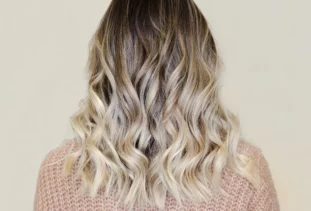Whether you want high-contrast color or prefer a seamless blend, how you treat your roots can greatly impact your overall look. A root smudge, shadow root, and other blending methods add dimension and soften the transition from lightened hair to natural color. While all of these hair color techniques can help you extend your time between salon visits, they differ in important ways, including how far the blend extends from the root.
You may think these blending techniques help only to transition blonde highlights to brown hair or other darker natural colors to extend your sun-kissed highlights or ombre look. However, you can also ask your stylist to apply these techniques alone to cover gray hair or enhance your roots.
This guide covers popular blending techniques such as root smudge, shadow root, root tap, and root melt to help you reach your low-maintenance hair goals.
Popular Blending Techniques
Hair care can feel complicated, especially when you love your style and want to make it last as long as possible. Root blending techniques such as root smudge, root shadow, root tap, and root melts help you maintain your look by adding dimension to your hair and softening the grow-out of your highlights.
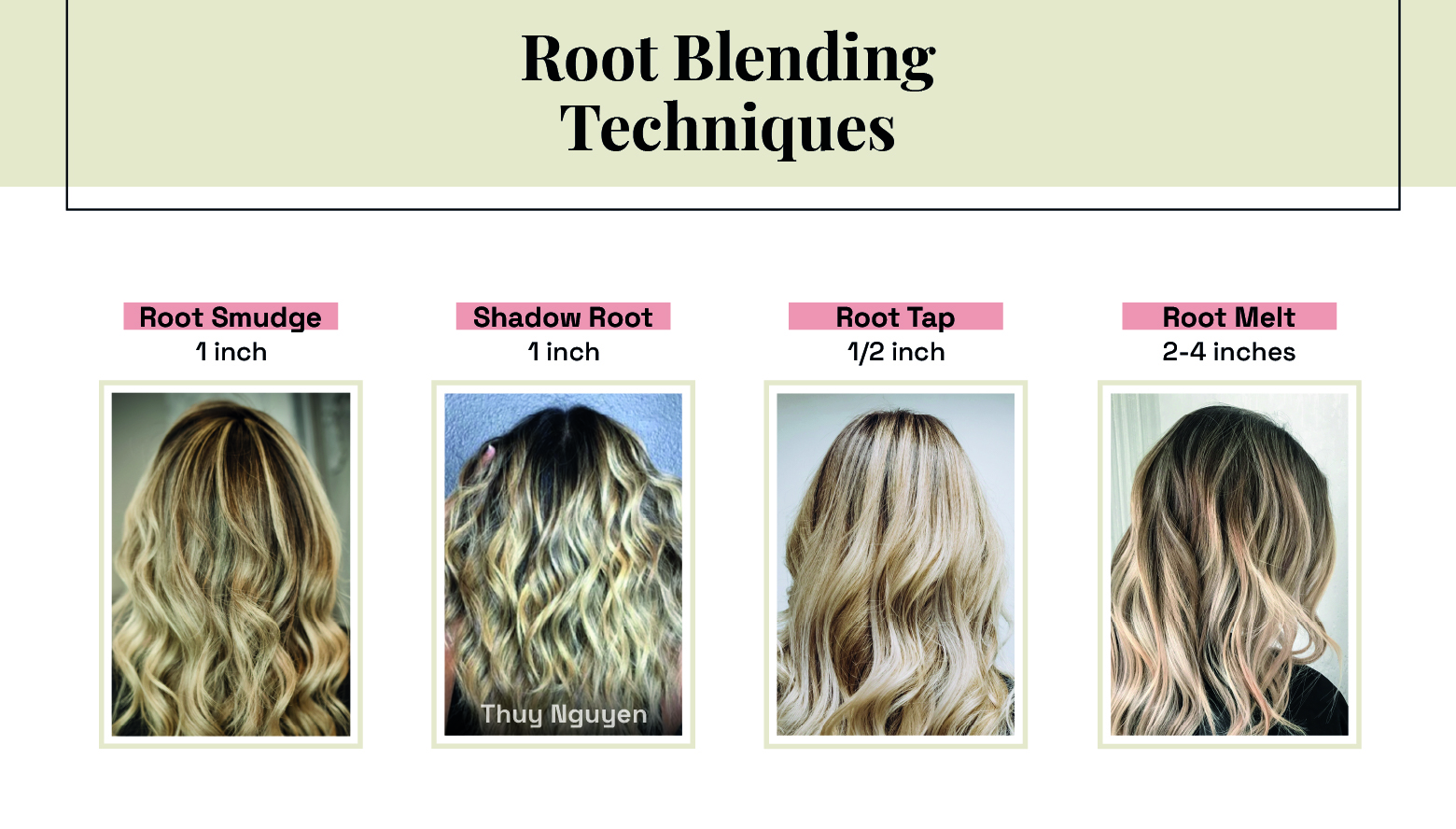
Your stylist can apply these techniques to all types and styles of hair. From short hair to long hair and babylights to balayage, your hair colorist can help you find the right method and dye — demi-permanent, semi-permanent, or permanent — to meet your style needs, and this section can help.
While the treatments use similar methods, these sections walk you through the differences between each one so that you can achieve the overall effect you want the next time you head to the salon.
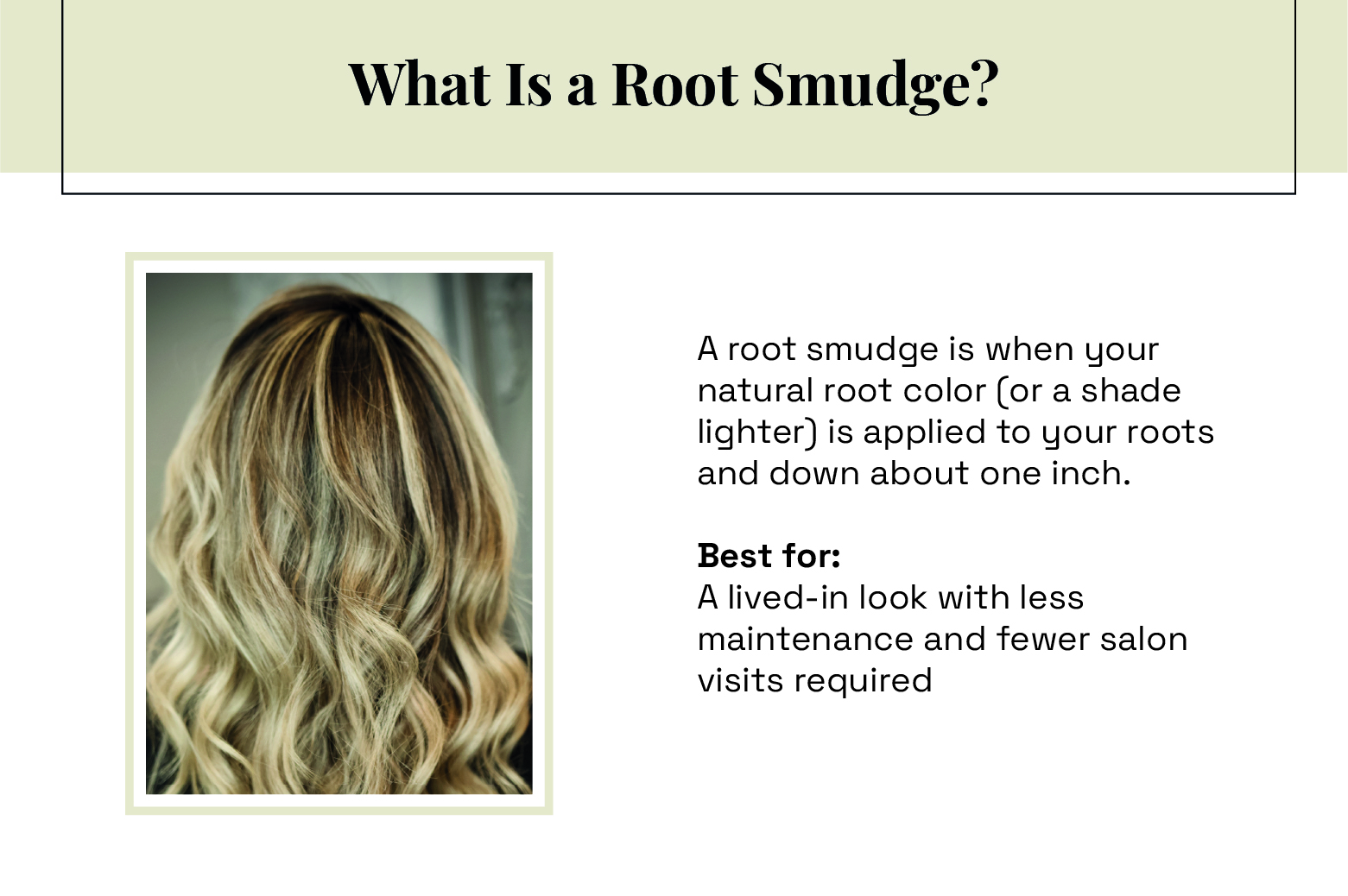
Root Smudge
A root smudge applies toner or gloss the same shade as your natural color or a shade slightly lighter than your natural color to your roots, “smudging” it down until it reaches your highlights. In order to seamlessly blend the transition between the darker and lighter hair colors, the root smudge overlaps the root about an inch down. This technique keeps your highlighted hair bright while creating a more natural, lived-in look with added dimension.
Smudged roots make a great choice if you have bleached or otherwise lightened hair and want to reduce the drastic line of demarcation. By creating a gradual transition between your natural roots and your highlights, root smudging can help you extend the time between salon touch-ups.
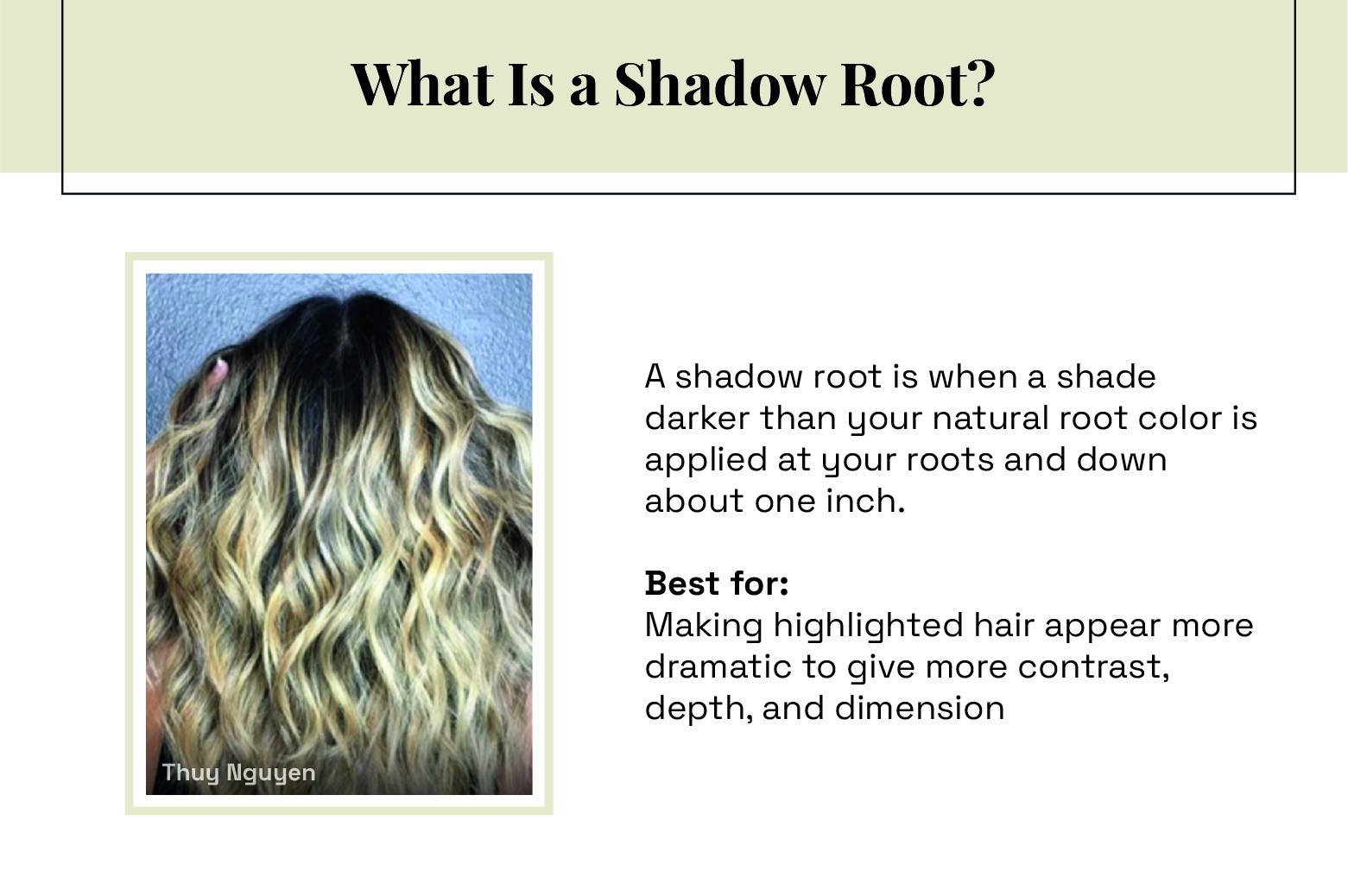
Image credit: Thuy Nguyen
Shadow Root
A shadow root, or root shadow, uses a darker color at the roots to increase contrast and make the highlighted hair pop. Like the root smudge, it also reduces harsh lines and adds depth and dimension. Some people use the terms interchangeably, but root smudges use a lighter color, and root shadows use a darker color. Shadow roots are applied at the roots and down an inch or more.
Although often used on hair with balayage highlights, the root shadow can add interest to any shade. Those with platinum blonde hair can opt for caramel roots, redheads can add a deep cinnamon color, and dark brown brunettes can achieve a multidimensional blend of browns.
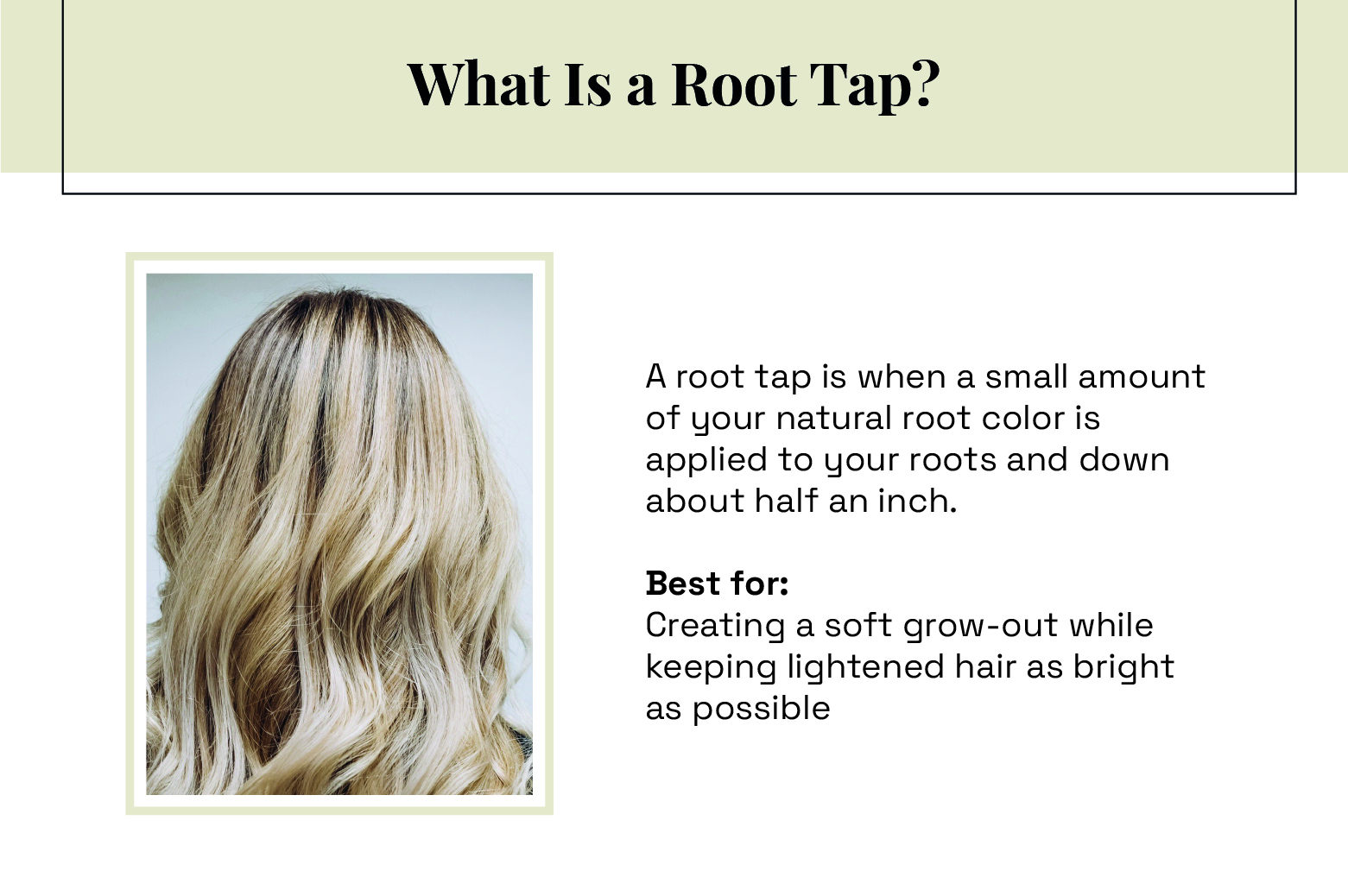
Root Tap
A great option for bleach blondes, the root tap helps you stay as blonde as possible while slightly softening foil lines. Using the same technique as a root smudge, the root tap applies even less color at the root. Your hairstylist will likely only apply it about a half inch down in the same shade as your natural hair. A root tap is best for having a soft grow-out while keeping your lightened hair as bright as possible.
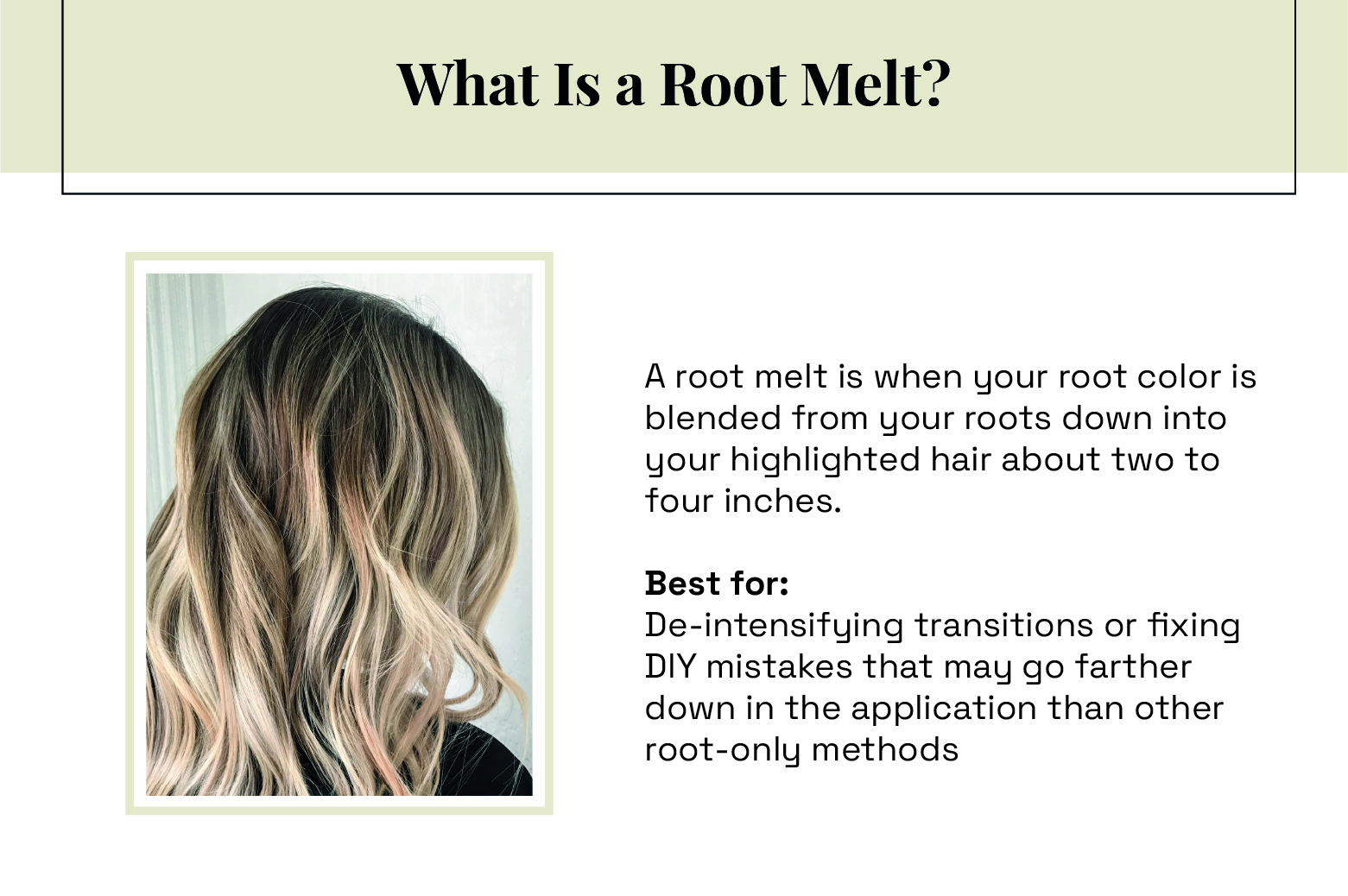
Root Melt
Blending further down from the crown than other root-only methods, color melting creates a lived-in deep-rooted look. The melt offers the best of both worlds: you can embrace your natural color while also enjoying the brightness of lightened hair. Also known as a color melt, this technique also works to fix DIY mistakes further down the hair or hair that is more grown out.
Choosing the Right Technique for Your Hair
The right root treatment can give you the look you want and extend your time between salon visits, helping you save on hair styling costs. Which root technique you choose depends on the type of look you want to achieve now and how you plan to color your hair in the coming months.
Root smudges use a color slightly lighter than your roots to blend the line of demarcation, while shadow roots use a darker color for a shadowy effect. Ideal for those who want a soft grow-out but still keep their hair as bright as possible, root taps apply a small amount of your root color close to your head. Root melts, on the other hand, drag your root color further down into your highlighted hair, creating depth and dimension.
If you can’t decide which look you want, your stylist can help. Professional hair colorists will know the subtle differences between these root treatments and can help you choose the best look for you. To set up your next — or first! — hair color appointment, book your stylist today through StyleSeat.





